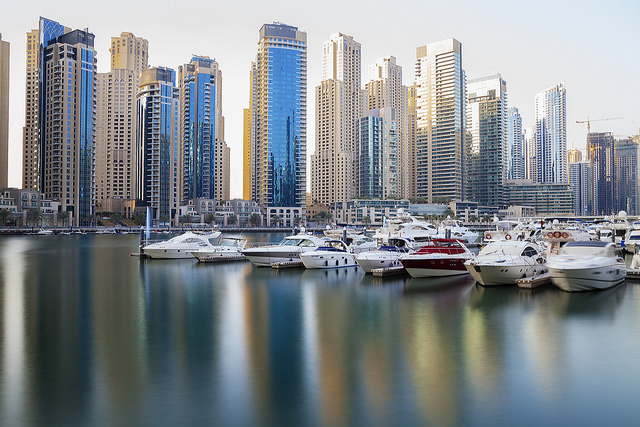
Dr. Hoshair Nooraddin
Estimated reading time: 4 min
Dr. Hoshiar Nooraddin, Associate Professor of Architecture at the Canadian University of Dubai (CUD) and on-site reviewer for the Aga Khan Award for Architecture, accepted our invitation to discuss the current state of architecture and urban planning in Dubai, his concept of “architecture as a human right” and a range of other subjects. Dr. Nooraddin has had a long and varied career that includes over 20 years experience as an architect and researcher, has written numerous published articles and books and has designed projects in Norway, Lebanon, Iraq and Saudi Arabia.
It is often claimed that socio-economic characteristics of a sustainably built environment are neglected by architects in favour of its technical aspects. Do you agree with this statement? If so, why do you think this occurs?
This is very complicated question, because sustainability is, in many ways, still in its infancy in terms of research and large-scale practicality. We believe that sustainability in our built environment cannot be fully achieved without including technical applications in our projects because only through technical application can we measure and show the differences.
In one of your most renowned works, you call for architecture to be considered a human right as a solution to the multiple harmful consequences of having powerful elites or dominating ethnic groups in multi-ethnic nations. How do you think architects, and big architecture firms, in particular, can contribute to the sustainable development of a type of architecture that is respectful of the heritage of minorities?
Architects and urban designers need be careful in developing new design solutions. We have to avoid the fast food trend in architecture. Architecture of each particular nation is a wonderful human achievement which needs be respected and used as a basic source in developing new solutions. Neglecting this simple fact has caused big damages to the living conditions of a large number nations in the world. This problem has frequently occurred as a result of policies which remove identity in certain multi-ethnic nations when one dominant group is responsible for decision making and imposes its ideology. The same situation can also occur as a result of wrong thinking by authorities who believe in developing an open process without any consideration to the existing architecture. In both cases the living environment is irrevocably damaged and the social structure altered. This raises two important issues to be considered. First, on the international stage, the UN has to declare local architecture of any particular nation as a human right that shall not be damaged by any other dominating power or nation during peace or war. This is imperative. Second, we need to ask a new question about sustainability in architecture. Is sustainability in architecture there to achieve targets and neglect others. I believe that any debate regarding sustainability has to consider the local architecture and the local living living environment as a priority. The local environment should be at the core of any innovation in driving forward sustainable architecture and urban design.
What lessons do you think other Middle Eastern cities can teach, and also learn from, Dubai regarding urban planning that consolidates the demand for modern architecture with the urge to respect the local traditional architectural identity in a globalising world?
Dubai has targeted and is achieving rapid growth in a way that no city in the Middle East has managed, making it a unique model. Many cities have tried to adopt some of the principals we have seen in Dubai with differing results. The approach has to be a holistic one. Applying local architecture and allowing for the already locally built environment in urban policies provides us with the best chance of re-using the living environment.
RMJM buildings in Dubai such as the iconic Capital Gate and the Abu Dhabi National Exhibition Centre are looked at as exemplary cases of sustainable design. In spite of the significant number of milestones that have been reached in the past couple of years, Dubai is still perceived as a city lagging behind others such as Vancouver and Copenhagen. What do you feel is the greatest challenge when it comes to the future of environmentally sustainable design in Dubai?
Dubai is a fast growing city. Vancouver and Copenhagen have achieved their growth much slower with totally different policies, targets, conditions and processes. Therefore, it is a big mistake to compare Dubai with these cities. I believe Dubai is a unique example in the history because the city has managed to build an iconic city in few decades while others took centuries. We should judge Dubai differently, for the moment. However, there is no doubt that Dubai can benefit from the work being done in many cities that is helping create more user friendly environments. There is no doubt that Dubai is paying attention to what is done elsewhere but to make best use of the new methods it chooses to adopt, there has to be a common target for the whole city.
What is it that frustrates and inspires you the most in architecture nowadays?
That the architecture has lost its common local identity.
How do you envision the most sustainable city in the world looking in 50 years time?
I believe that in 50 years every city on the Earth will have detailed design guidelines in place to plan, design, use, maintain and re-use its buildings.



Brilliant, I particularly identify with his frustration in respect to local architecture lossing its identity.
Well done!